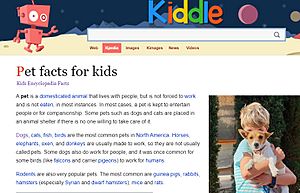Cache (computing) facts for kids

A cache is a block of memory for storing data which is likely used again. The CPU and hard drive often use a cache, as do web browsers and web servers.
A cache is made up of many entries, called a pool. Each entry holds a datum (a bit of data) which is a copy of a datum in another place.
A cache hit occurs when the requested data can be found in a cache, while a cache miss occurs when it cannot. Cache hits are served by reading data from the cache, which is faster than recomputing a result or reading from a slower data store; thus, the more requests that can be served from the cache, the faster the system performs.
To be cost-effective and to enable efficient use of data, caches must be relatively small. Nevertheless, caches have proven themselves in many areas of computing.
A good example of how a cache works is how a cache works in your web browser. When you visit a website page for the first time things like the images and HTML from the page are stored in your browsers cache, so the next time you open that page it loads faster.
See also
 In Spanish: Caché (informática) para niños
In Spanish: Caché (informática) para niños

